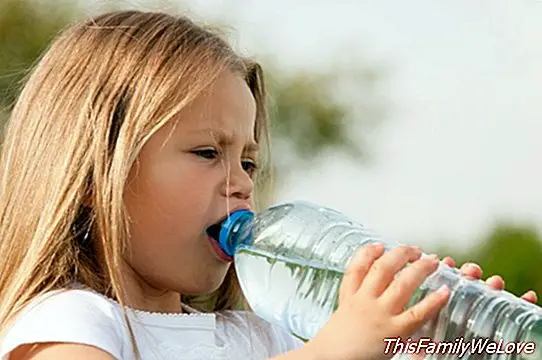Water, how much should children drink?


The needs of water and liquids in children and adults are very diverse and vary according to age, sex, type of food, climate, exercise, clothing, etc. The European Food Safety Authority (EFSA) has published reference values for adequate fluid intake by age group, establishing 1,600 ml / day for children between 4 and 8 years, compared to 1,900 ml / day recommended for children and 2,100 ml / day for girls, between 9 and 13 years old.
In the case of adolescents and adults, establishes an intake of 2 liters for women and 2.5 liters for men, being this recommendation similar for the elderly, since in them the capacity to conserve the water in the organism deteriorates, and the sensation of thirst is lost.
The EFSA also recommends that the pregnant women increase their fluid intake according to the increase in energy consumption they make, and for breastfeeding women, that this increase of liquids is 700 ml / day, in relation to non-lactating women of the same age.
Hydration, essential for life
The essential function of water and liquid beverages in general is to help hydrate. In particular, water is an essential nutrient for the maintenance of life and the regulation of body temperature. In addition, water is the structural basis of living beings, it is the means for transporting materials from our body, it serves to supply nutrients to tissues, it acts as a solvent for chemical reactions and serves to eliminate waste substances, among other things.
Water is between 50 and 60 percent of body weight total of the human being, and approximately between 5 percent and 10 percent is eliminated every day through mandatory losses (breathing, sweating, diuresis and feces). It is an essential nutrient for life. Hydration is essential for the proper functioning of numerous functions of our body.
Types of dehydration in children and adults
Around the 80 percent of the daily water intake is obtained from beverages and the 20 percent of the food, especially the vegetables and fruits. Currently have defined groups of special risk of dehydration: children, the elderly, pregnant or lactating, athletes, and in general those working in warm environments and perform intense physical work (construction, mining, firefighters , etc).
Dehydration can occur due to an increase in needs (excessive heat) or losses (diarrhea, for example). Thus, different severities and types of dehydration have been defined based on the amount of fluid lost, the speed of loss, and the parallel loss of solutes / electrolytes. The type of dehydration will depend on the percentage of weight loss. It is considered mild when it comes to a decrease in body weight of 1 to 3 percent, and severe, when the loss is greater than 5 percent.
Symptoms of dehydration
Basically they focus on an increase in fatigue, a difficulty of discrimination and memory loss when suffering from moderate dehydration (2.8% weight loss). The alterations of the central nervous system appear in association with a decreased brain cell volume and include altered mental status, weakness, neuromuscular excitability and neurological deficits. Simply the absence of fluid intake for 24 hours conditions a decline in mental and psychomotor skills, starting at 9 am and there have been reductions in performance that begin to be statistically significant.
Marisol Nuevo Espín
<



